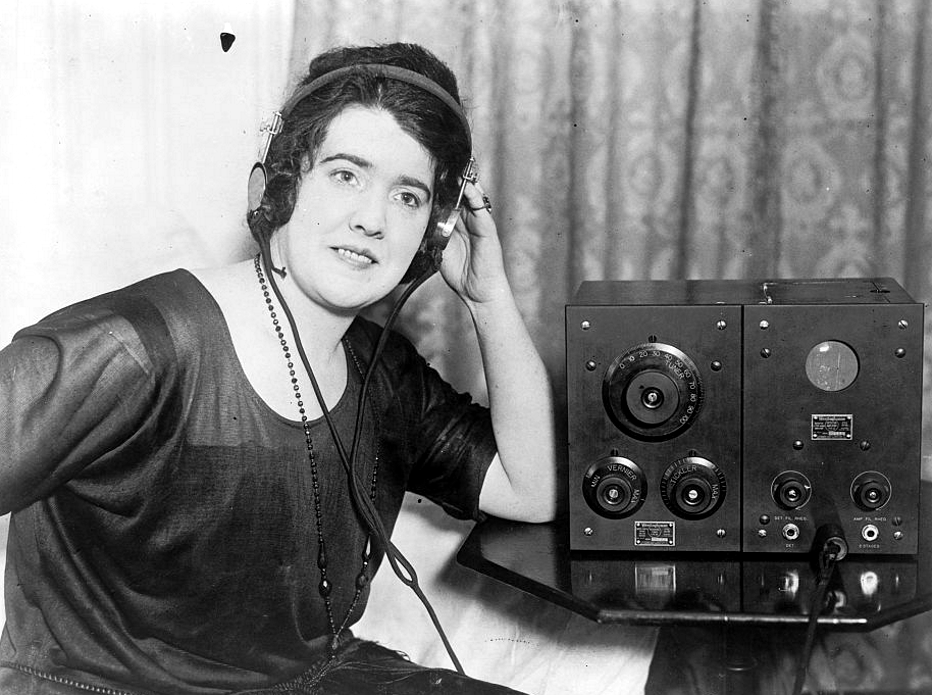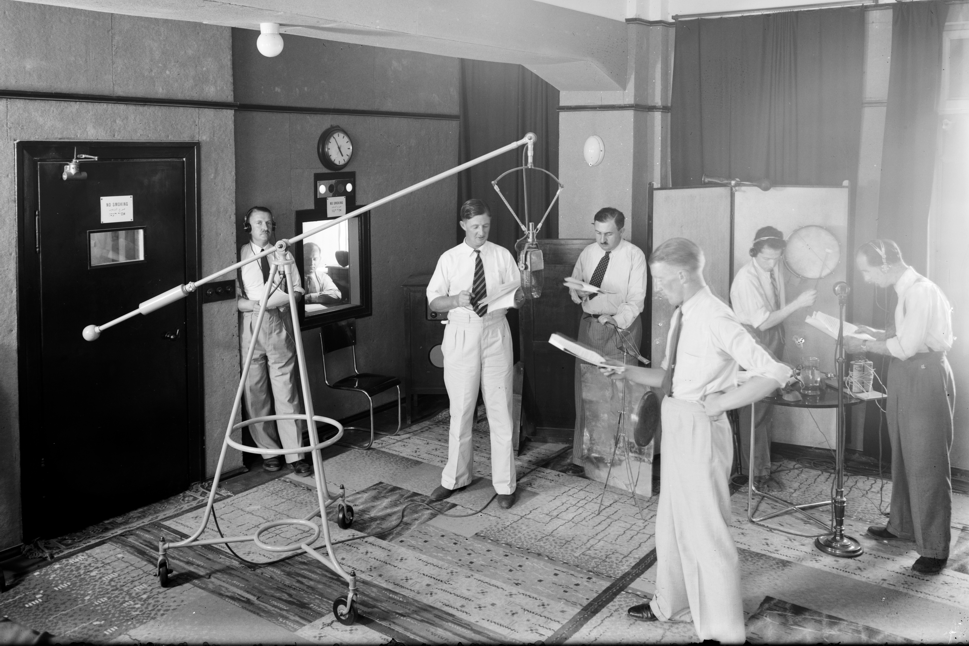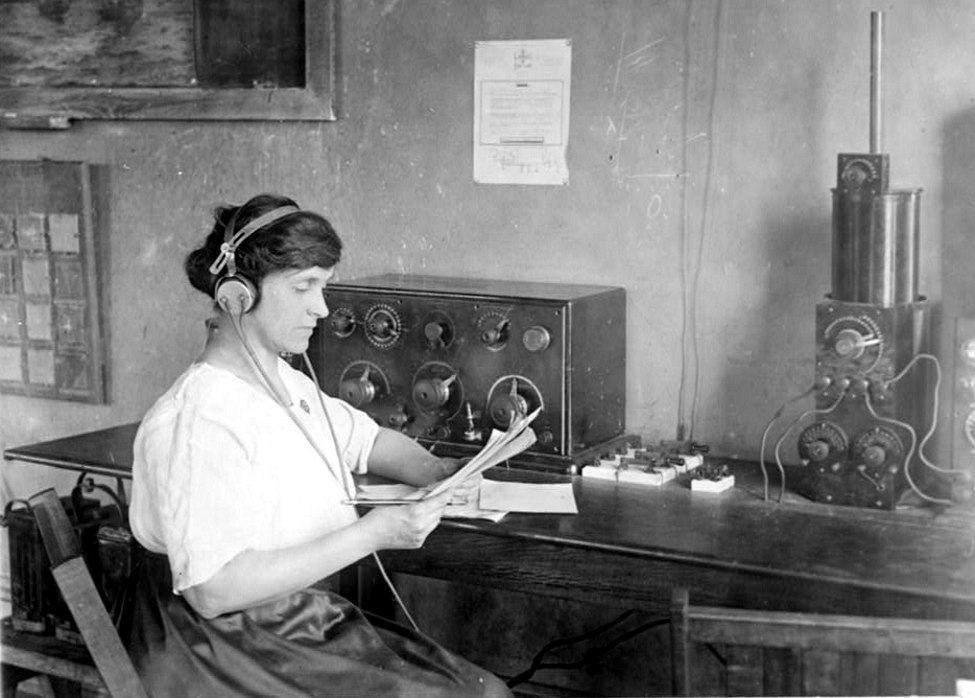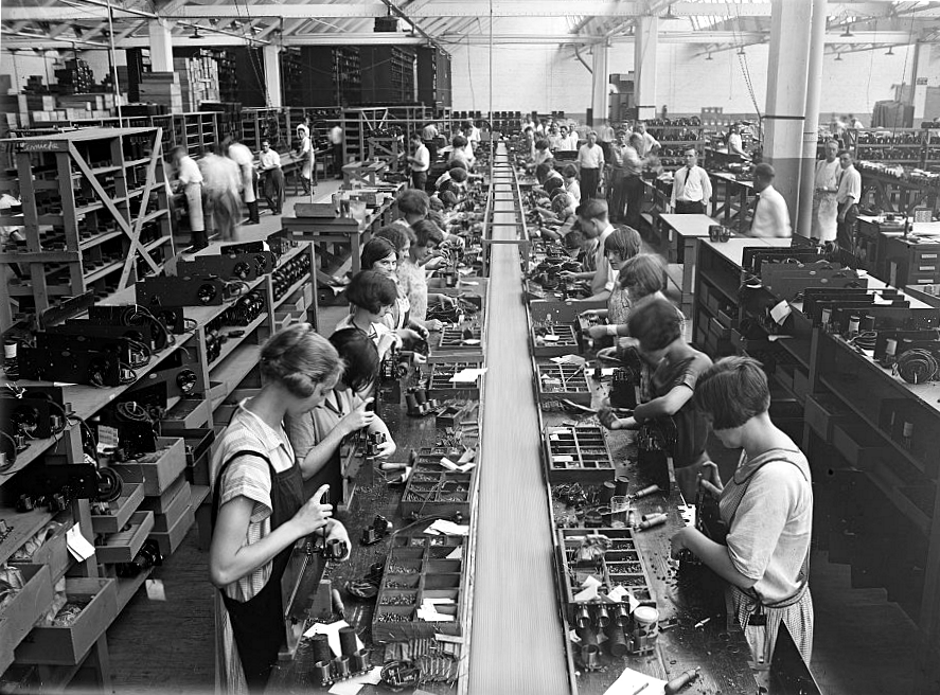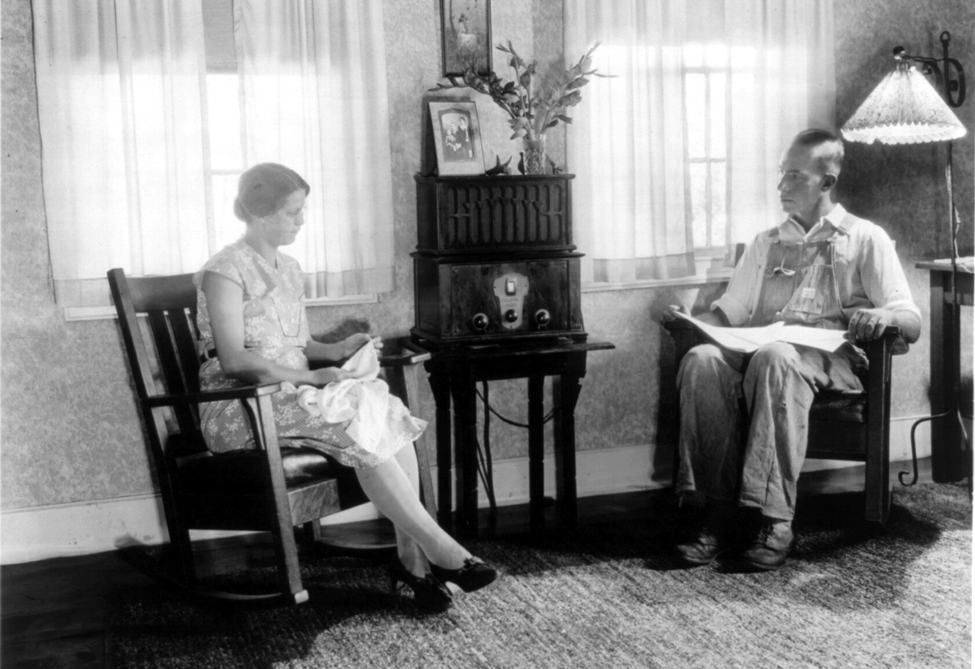|
The wireless
telegraph for ships
Radio was first used in the early 1900s mainly as a way for ships to stay in contact with land and other ships. Radio messages were transmitted and received using the Morse code's "dots" and "dashes." The system was called the wireless telegraph or the radio telegraph. This old photo shows the radio room of a ship in the 1910s. |
|
1920: The first
radio broadcast stations
By 1920 radio had developed to the point where voice and music transmission was possible, not just the Morse code. The first radio broadcast stations signed on the air in America that year. Large radio transmitting antennas like these began sprouting up across the country as the radio broadcast industry grew very rapidly. |

|
"We've got to
get one of these!"
Radio receivers became the "must have" household item of the 1920s. This photo shows a woman listening to a broadcast in the lobby of a hotel in 1922. By the end of the decade, most American homes had a radio set. |
